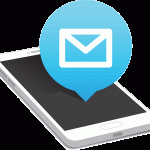
Personalizing the User Experience
Embrace Personalization: Personalization goes beyond using the user’s name. It’s about creating an immersive and relatable experience. Implement dynamic content that aligns with the user’s interests and previous interactions. This approach fosters a connection, making users feel valued and understood.
CEO Involvement: Involve top executives in your communication strategy. When a CEO personally reaches out in an onboarding email, it adds a layer of authenticity and trust. This tactic not only humanizes your brand but also underscores your commitment to customer satisfaction.
Educating Users: A Roadmap to Mastery
Guided Learning Paths: Equip users with a structured learning path through your emails. This path should cover key features and use cases of your product, tailored to the user’s role and industry. Interactive content, such as quizzes or quick tasks, enhances engagement and learning.
Success Stories and Case Studies: Share stories of how similar customers achieved success with your product. This not only provides practical insights but also builds confidence in your solution’s capabilities.
RELATED: SaaS Lead Generation Tips
Leveraging Behavioral Insights
User Behavior Analysis: Leverage data on user interactions within your product. This information can help tailor onboarding emails to address common challenges or highlight underutilized features that could benefit the user.
Predictive Content: Utilize AI to predict and address user needs before they arise. Predictive content in emails can guide users towards features or resources they might need next, based on their usage patterns.
Continuous Engagement and Feedback
Frequent Check-ins: Regularly check in with your users through email. These check-ins should be more than mere formalities; they should offer genuine assistance and gather feedback on the user’s experience.
Adaptive Content: Adjust the content of your emails based on user feedback and engagement levels. This shows that you are listening and evolving with your user’s needs.
Conclusion: Elevating the Onboarding Journey
By embracing these strategies, your SaaS can provide a user onboarding experience that not only educates but also engages and delights. Remember, the goal is to transform new users into proficient and satisfied customers, paving the way for long-term success.


